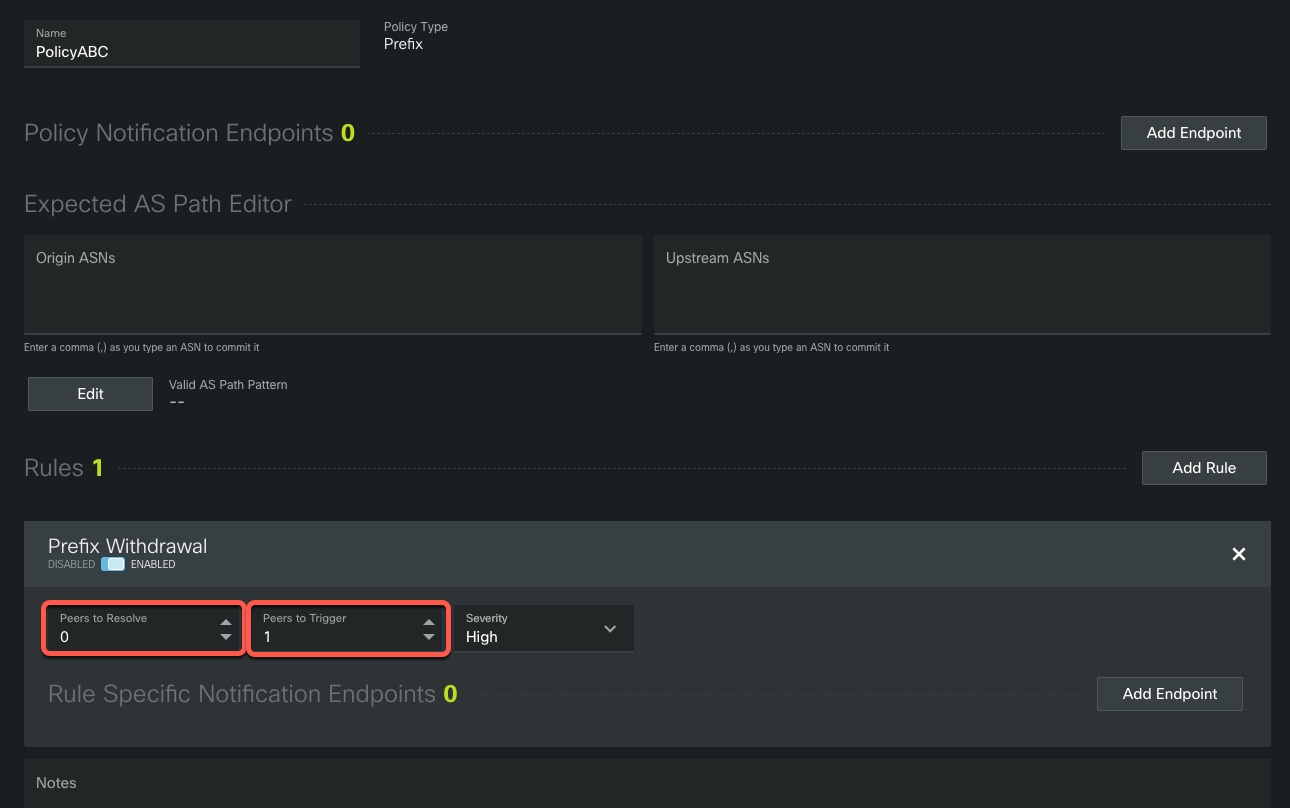View alarm descriptions
This section contains a list of alarms and linked descriptions.
| Hardware Integrity Validation | ||
| Dossier Collection Failure | ||
| Expired Device Certificate |
The documentation set for this product strives to use bias-free language. For the purposes of this documentation set, bias-free is defined as language that does not imply discrimination based on age, disability, gender, racial identity, ethnic identity, sexual orientation, socioeconomic status, and intersectionality. Exceptions may be present in the documentation due to language that is hardcoded in the user interfaces of the product software, language used based on RFP documentation, or language that is used by a referenced third-party product. Learn more about how Cisco is using Inclusive Language.
This section contains a list of alarms and linked descriptions.
| Hardware Integrity Validation | ||
| Dossier Collection Failure | ||
| Expired Device Certificate |
When a policy rule is violated, you can configure an alarm notification to be sent to one or more endpoints (see Configure Notification Endpoints). The notification contains information about the alarm state and alarm event data.
Notifications are sent if one of the following alarm state changes occur:
From Active to Clear
From Configured to Active
From Acknowledged to Clear
From Snoozed to Clear
A notification will not be generated if an alarm becomes active again and is already in one of the following states:
Active
Snoozed
Acknowledged
Related Links
Alarms are categorized into three types:
| Type | Description |
|---|---|
| ASN | Autonomous System Number (ASN) type alarms monitor the state of a configured BGP Autonomous System (AS). These alarms are generally used to detect unexpected prefixes coming from your ASN and alert you if an expected condition is violated. For example, an alarm becomes active if Crosswork Cloud Network Insights detects a new prefix that was not previously observed and should not be originating from a configured ASN. |
| PEER | Peer type alarms monitor the state of a configured Peer and its Routing Information Base (RIB). These alarms are used when you have configured peer monitoring. For example, an alarm becomes active if Crosswork Cloud Network Insights detects a number of prefixes in RIB that is outside the configured parameters. |
| PREFIX | Prefix type alarms monitor the state of a configured prefix and a number of its BGP attributes, such as the Origin ASN of the prefix or the length of the AS path attribute. It is the most common alarm type and is designed to detect unknown events on prefixes that are being monitored. A set of prefix type alarms also monitor the ROA status (VALID, INVALID or ABOUT-TO-EXPIRE) of the configured prefix. |
Alarm thresholds are used to control the sensitivity of alarms. Consider configuring alarm thresholds if some alarms are often being triggered by small numbers of observed changes and are considered "false alarms".
An alarm is triggered (Active) when Crosswork Cloud Network Insights detects a violation against a set of conditions related to a monitored AS, peer, or prefix. The alarm clears when all conditions are no longer violated. Since data is collected from many BGP Peers, Crosswork Cloud Network Insights has access to multiple views of the state of a prefix or AS. These views are not always identical, and the frequent state changes in a small number of peers (such as those caused by router flap) can produce a lot of alarm noise. Thresholds can act as a noise dampening mechanism.
The following Peer Count thresholds can be configured for certain alarm rules to dampen alarm noise:
Peers to Trigger—The minimum number of violation peers required to report a condition violation that would cause the alarm to become Active. For example: A Peers to Trigger threshold has been set to 1 for the Prefix Withdrawal alarm. The number of peers reporting that a prefix has been withdrawn has to exceed 1 before External Routing Analysis issues an Active prefix withdrawal alarm.
Peers to Resolve—After an alarm has been activated, it remains Active. The alarm is triggered again with every new condition violation until the violation peer count is less than or equal to the Peers to Resolve threshold (for example, this can occur due to the withdrawal of violating advertisements or an increase to the Peers to Resolve threshold). The alarm then goes into Clear state.
 Note |
The Peers to Resolve threshold must be less than the Peers to Trigger threshold. 
|